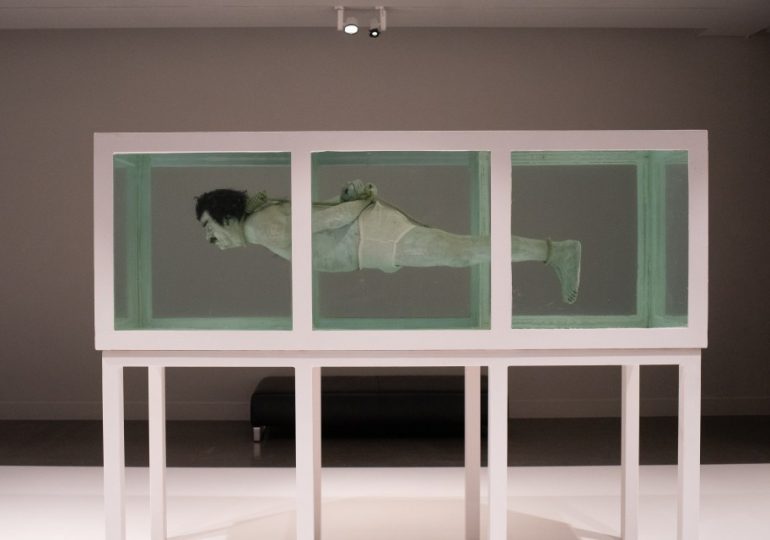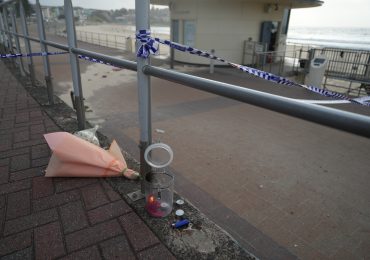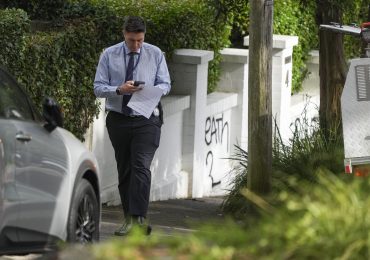THE world’s “most offensive” museum is filled with banned art – from Saddam Hussein in a massive tank to Ronald McDonald nailed to a cross.
Tatxo Benet, the curator of The Museum of Forbidden Art’s, told The Sun that visitors prepare to be offended by the art.
GettyCzech artist David Cerny’s Saddam Hussein in a tank, named “Shark”[/caption]
AFPA nude portrait drawn of Donald Trump – including an unfortunately small member by Australian artist Illma Gore[/caption]
GettyInes Doujak’s ‘Not Dressed for Conquering/HC 04 Transport’ piece – apparently featuring former Spanish king Juan Carlos I[/caption]
GettyRonald McDonald is on the cross in this piece named ‘McJesus’[/caption]
GettyThis piece by Zoya Falkova was removed from a museum in Kyrgyzstan after officials claimed it went against traditional values[/caption]
Visitors should brace themselves to see the bizarre pieces that have come under fire at some point for various social, political, religious, moral or cultural reasons in Barcelona’s Museu de l’Art Prohibit.
Tatxo Benet, 67, a Catalan businessman and journalist and the curator behind the iconic banned art museum began collecting the art in 2018 – and owns hundreds of controversial pieces.
He told The Sun how he started his own collection when a piece he bought got taken from him – straight after winning the auction.
Mr Benet said: “It’s a museum where you can find pieces of art that have been censored or prohibited or attacked in some way or the other.
“Seven years ago, when I bought a piece of art in a show in Madrid, that piece was censored a few minutes after I bought it – and they took it out from the exhibition.
“It was a huge scandal in Spain because it referred to politics in Catalonia and Madrid.
“Starting at that moment, I started to look for other situations like that, not only referred to politics, but also religion or sex or whatever.”
Images show how pieces criticising politicians are a fairly easy to come by in the museum.
These include an unbelievable piece by Czech artist David Cerny of Saddam Hussein in a tank, named “Shark” – which purposely bears stark similarities to Damien Hirst’s famous work.
Another shows Spanish dictator Francisco Franco stuffed inside a Coca Cola fridge wearing his military gear and sunglasses.
Others include a nude drawing of Donald Trump – with an unfortunate sized appendage.
Another dominant theme represents female oppression with thought-provoking pieces.
In one room there’s a punching bag hanging from the ceiling in the shape of a woman’s torso – representative of physical abuse.
And in the next there’s glamorous, sparkly heels adorning prayer rugs.
No one has the right to decide what can be seen or what cannot be seen
Tatxo Benet
Many pieces represent religious oppression and all have stories behind them on why they were banned or removed.
This includes the famous “P*** Christ” – a blood-red photograph of the crucifixion – but immersed in the artist’s own urine.
Other pieces of art include a McDonald’s restaurant with an obese naked person laying across the table as someone cleans a window outside.
Despite Mr Benet owning over 300 pieces of censored art at one point, only 42 works are currently on display.
AFPSpanish journalist and art collector Tatxo Benet poses for pictures at the Forbidden Art Museum[/caption]
AFPThe ‘Smiling Copper’ by Banksy even features at the museum[/caption]
GettyChinese authorities banned this portrait of Mao by Andy Warhole[/caption]
An installation by French Algerian artist Zoulikha Bouabdellah that shows 30 pairs of stilettos on prayer rugsGetty
The collector looks for visitors to keep an open mind when exploring the bizarre art collection.
He said: “People enter the museum with some precaution, because they don’t know what they are going to find.
“Everyone is thinking, well, I will find something that will offend me.
“But they see all around people are looking at this artwork, and they don’t feel any offence.
“So at the end you have an experience where you match with others and you see that everyone has their point of view.
“You believe and you understand that no one has the right to decide what can be seen or what cannot be seen.”
Tens of thousands of people have come to the Barcelona-based museum to see the banned art.
When people leave the museum after seeing the various pieces, Mr Benet hopes to make visitors more tolerant to what they’ve witnessed and the freedom of expression.
He said: “This museum could be named the Tolerance Museum, because I’ve spoken with many people, and the experience, the feelings that the people experience at the end of the visit, is that their tolerance has increased.
“The level of tolerance has increased because they were confronted with some things they may not like but they understood.
“Even things that they don’t like, they have to be shown. They have the right to be shown.”
The Museu de l’Art Prohibit is the only collection of censored and prohibited art in the world and is located a few yards off of La Rambla in Barcelona.
Who is Tatxo Benet?
TATXO Benet is a Spanish journalist, businessman and the curator of the Museu de l’Art Prohibit in Barcelona.
Josep Maria Benet Ferran, or Tatxo, began his career as a staff writer for local news and sports before moving to Barcelona to be a part of Catalunya Express.
He then made his way up in his career before joining the founding team of TV3 – Televisio de Catalunya as the Head of News in the Catalonia section – he became Head of Sports later on.
In 1997, Mr Benet moved to Madrid to become General Director of Audiovisual Sport in a company with various owners that was set up to commercialise media rights to the Spanish Football League.
Later in the same year, Mr Benet resigned and returned to Barcelona to then set up his own company – one that later merged with billion-euro company Mediapro.
In 2018 Mr Benet started his art collection called ‘Censored’ which later developed into the Museu de l’Art Prohibit.
Mr Benet told The Sun about what the museum was about and how his own collection began when a piece he bought got taken from him – straight after winning the bid.
He said: “It’s a museum where you can find pieces of art that have been censored or prohibited or attacked in some way or the other.
“Seven years ago, when I bought a piece of art in a show in Madrid, that piece was censored a few minutes after I bought it – and they took it out from the exhibition.
“It was a huge scandal in Spain because it referred to politics in Catalonia and Madrid.
“Starting at that moment, I started to look for other situations like that, not only referred to politics, but also religion or sex or whatever.”
Despite Mr Benet owning over 300 pieces of censored art at one point, 42 works are currently on display.
GettyTatxo Benet had over 300 pieces of censored art at one point – over 40 of which are in the museum[/caption]
Leave a comment








